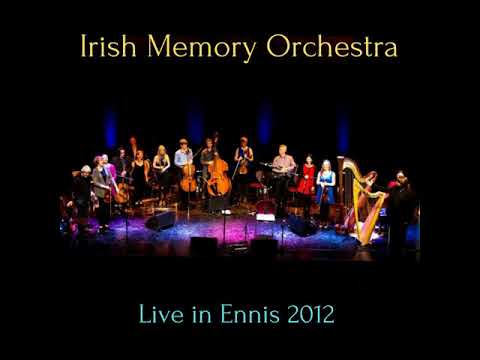Le Chéile is in Aonar (2010)
for mixed ensemble.
Duration 25 minutes.
Two versions exist
1. For traditional music ensemble (2 fiddles, 3 tin whistles, 2 Irish flutes, uilleann pipes)
2. For chamber orchestra with Irish traditional instruments
Composed with the aid of a bursary from the Arts Council of Ireland’s Deis Scheme.
Trad ensemble version premiered by Harry Bradley, Aoife O’Brien, Mick O’Brien and Caoimhín Ó Raghallaigh in August 2011 at the Masters of Tradition Festival, Bantry
Chamber orchestra version premiered by the Irish Memory Orchestra with conductor Bjorn Bantock at 2018 Skibbereen Arts Festival, Cork, Ireland.
Programme Poem
Some people think Irish music all sounds the same
Perhaps because some tunes have the same DNA
They’ll start and end with the same little turn
But the notes in between are for those who discern
Well Seán Ó Ríada tried this first
He took two slip jigs and told his band to rehearse
Playing the tunes together at once
Now I thought to myself, that’s a clever little stunt
Then Seán’s son Peadar tried another way
He composed a tune with three parts to be played
The first time around the parts sound on their own
Then the parts combine into a new kind of tone
Now I’ve taken the Ó Ríada’s ideas to extremes
In the space of 20 minutes you’ll hear reams and reams
Of familiar tunes combined in counterpoint
Some of you might love it, some may wonder what’s the point
Whichever way you take it I’m sure you’ll agree
The musicians who are playing are of the highest pedigree
So please sit back and listen with open ears
Now welcome the musicians, as I disappear………….
(This programme poem was used to introduce the music at the premiere)
Programme Note
Together but Apart is a rough translation of the title of this piece.
This is the only piece I’ve ever composed where existent traditional melodies are used in the context of a ‘new’ piece of music.I had the idea of creating a large piece where all the musicians maintained their individuality yet still merged as an ensemble. I noticed that many traditional tunes sound superficially similar. So in this piece old traditional tunes which seem to have the same basic DNA are played together. When the players bring their individual sound and approach to rhythm, variation and ornamentation the similarities are stretched and unusual rhythmic and harmonic counterpoints occur.
Seán’s son Peadar also experimented with something similar on his recent ‘Tríuir’ album with Martin Hayes and Caoimhín Ó Raghallaigh. At one point all three parts of a jig are played simultaneously.This piece elaborates this concept to a large scale work of over 20 minute’s duration. Up to four different tunes are played simultaneously in this piece. If you know your traditional music you should be able to isolate each tune in each short connected section as listed below.Section I – The Jolly Tinker and Sporting Paddy go to The AbbeySection II – Tommy Peoples brings The Maids of Feakle &The Primrose Lasses to meet The Blacksmith
Section III – Julia Delaney’s Mother’s Delighted to find The Porthole of the Kelp in Scarriff
Section IV – As I went out upon the ice at the Top of Maol near Ballydesmond I thought to myself ‘I’ll buy boots for Maggie!
Section V – Tatter Jack Walsh and Garrett Barry go to Fraher’s to see the Hag at The Churn
Section VI – The Return to the Forest of Ornaments
Section VII – The Kid on the Mountain watches The Butterfly on the Promenade
Section VIII – The Kid on the Mountain met Dever the Dancer The Night Poor Larry Was Stretched
Section IX – John Doherty’s Steeplechase over The Graf Spee
Section X – The Bucks of Oranmore meet Lucy Campbell and Davy Maguire at the Boyne Hunt
-
“The music performed gave a cutting edge quality that also proved challenging to the musicians and entertaining to the audience who responded to their efforts with a standing ovation at its conclusion.”Paul Keating – The Irish Voice


